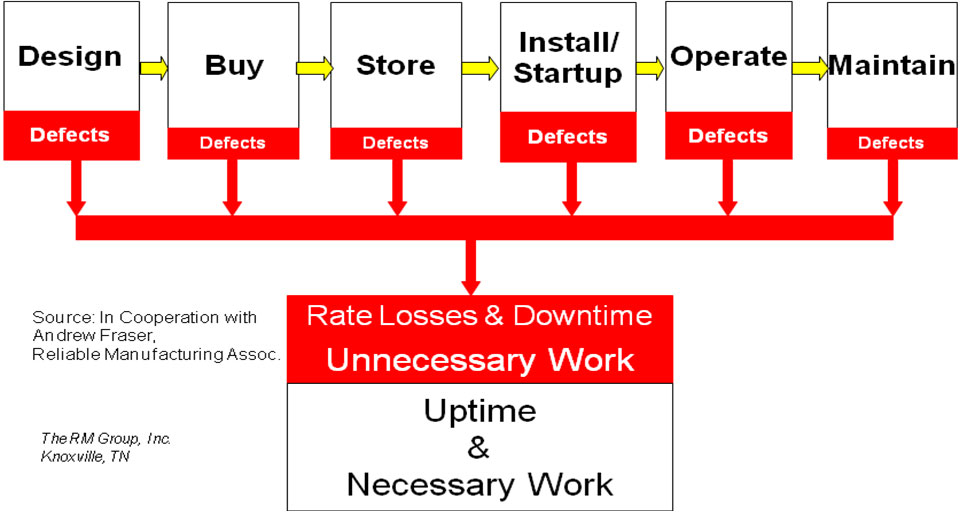How Do You Create Partnership Agreements?
What are partnership agreements?
Partnership agreements are contracts between functional areas of the plant which have an effect on overall reliability. Developing, fostering and committing to plant partnership agreements is an important element in successful reliability improvement initiatives.
Why use partnership agreements?
Ron Moore from the RM Group, Inc in Knoxville, TN in cooperation with Andrew Fraser from Reliability Manufacturing Association conducted a study which shows many functional groups within a plant have an impact on the overall reliability of the site, not just Maintenance. In fact, Maintenance is not even the major contributor to losses associated with reliability.

Figure 1: Losses and Downtime Responsibility
The study showed Sales (15%), Production (23%), Maintenance (17%), Procurement (12%), Plant Engineering (22%), and Management (11%) all have a role in how reliably a plant operates. As an example, let’s say there is no Partnership Agreement between Procurement and Maintenance. Procurement’s goal, as measured by management, is to provide the material Maintenance needs at the lowest possible cost. Consequently, maintenance may get inferior material which does not meet the needs of Maintenance. The result is unexpected and costly leaks, breakdowns and other failures.
Where do partnership agreements apply?
A partnership agreement should include business functions affecting reliability. Here are some examples of where partnership agreements can improve reliability:

How do you create partnership agreements?
1.Create two cross-functional groups for each agreement and ask several questions to uncover tensions and identify aspects that need to improve:
- What are the key success factors for each group?
- If you could fix one thing about working with the other group, what would it be?
- What would change about this process?
- What does their work cause you to do?
- What do you think the other groups would say about us?
The answers to these questions reveal subjects that deserve some deep thought on how to improve relations.
2.Ask the groups to identify the challenges that need to be addressed. The agreement needs to begin with a stated problem or set of problems that the new processes or tools are going to improve. Summarize on a single page the areas of importance for both partners in the agreement and refine the problem statement to prioritize which processes, assets or interactions to focus on first.
3.The groups then begin to consider steps they can take to close the gaps that have been identified. It’s important to identify the functional roles involved in the departments or functions within a single department. Tasks and responsibilities are assigned to functional roles, not to individuals, so that improved processes are sustainable.
4.The group next develops a set of metrics that measure the performance of the commitments, new processes and/or tools. Defining metrics for each desired change improves the likelihood of success and minimizes subjective evaluations.
What factors are critical for success?
Developing new tools and processes takes time and requires the involvement of many different perspectives. Depending on the daily work load, it may take the teams several weeks to gain alignment and consensus. Once developed, an agreement can be piloted in a work area for a period of time to test the agreement. Anticipate that there will be some issues, setbacks and difficulties in execution. Partnership agreements should be viewed as living and ever-changing documents that provide a guiding light for culture change.
Getting groups to adapt to the new processes and sustain the changes is the key. A six and 12 month checkup is recommended. At these sustainability checkups, the group can revisit the metrics that were designed and confirm that they are still valid and add value.
Participating in developing partnership agreements builds employee engagement that helps fuel continuous improvement. While the goal of culture change can seem vague and hard to define, well-planned and executed partnership agreements direct culture in the right direction. They are visible, traceable and increase accountability, thereby increasing reliability as well.
© Life Cycle Engineering, Inc.
